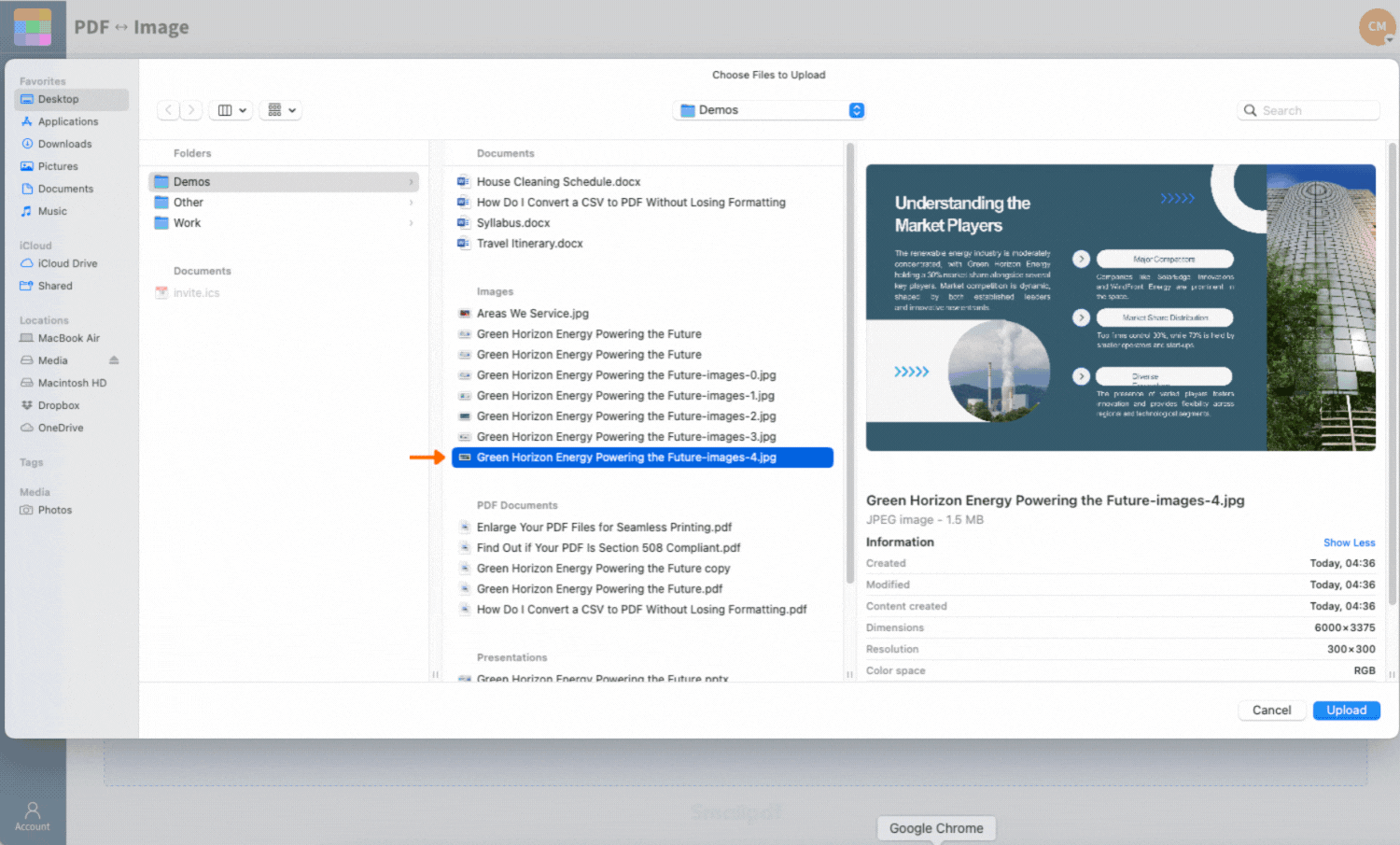
Shrink JPGs fast with our free JPG size reducer—no quality loss, no downloads, and no limits on where or how you use your smaller images.
To reduce JPG file size, upload your image to Smallpdf's free compressor, which automatically optimizes file size while maintaining quality—most files shrink by 40-80% without visible quality loss.
How to reduce JPG file size online (free)
If your JPG is too big to upload, email, or even save without eating up space, don't stress. You can trim it down in a few easy clicks. No tech skills needed.
Here's how to reduce JPG file size using Smallpdf: 1. First, you're going to convert your JPG to PDF. 2. Click “Compress” on the result page. 3. Choose “Basic compression.” 4. Click on “Export As” and choose “Image (.jpg).” 5. Done! You now have a compressed version of your JPG.

Easy and effective JPG file size reducer
Your new file's ready to save, send, or share without breaking a sweat.
How JPG compression works (and why some JPGs are big)
You'd think JPGs would always be small, right? After all, they use lossy compression by design, which means they're built to reduce file size by removing some visual data that your eye won't miss.
But many modern JPGs, especially those snapped on smartphones or professional cameras, still end up chunky because of:
- High resolution and large dimensions
- Rich color data and detailed imagery
- Hidden metadata (like location, camera settings, and timestamps)
All of this inflates the file size. So even if the JPEG encoding is designed to be compact, the content can still be heavy. It's not unusual for a simple photo to take up 5 MB or more. That's usually okay for storage, but not so great when you're trying to upload it to a form, send it via email, or speed up a web page.
How much can you reduce a JPG (without noticeable quality loss)
With our JPG size reducer, most files get cut down by 40% to 80%, all without any noticeable drop in quality. This is what we call "visually lossless" compression—your image looks identical to the original, but the file size is much smaller. If you're working with large dimensions, resizing the JPG before compressing can also make a big difference in file size.
The tool even shows you how much space you saved. After compression, you'll see a percentage value that compares your original image with the new version. For everyday use (like posting online, attaching to emails, or sharing on messaging apps) this smaller version works just as well and loads a whole lot faster.
In most cases, you won't be able to tell the difference, even if you zoom in. It's like putting your file on a diet—it comes out leaner, but just as strong.
Batch reduce JPG file size (compress multiple images at once)
Working with more than one image? No problem. You can compress a whole batch in just a few steps with our bulk compression feature. 1. Upload all your JPG files into the Compress PDF tool. 2. Our platform will process them as a batch queue automatically. 3. Export the compressed files back to JPG format all at once or download as a ZIP archive.
And if you need to mark up, crop, or annotate your images as PDFs before exporting, the Edit PDF tool makes it easy.
This is especially handy for photographers, marketers, or anyone handling a folder full of product shots or scanned documents. Whether you're sending photos to clients or cleaning up your portfolio, our tool acts like a smart photo optimizer that balances speed with quality.
Why reduce JPG file size (and why use Smallpdf)
Still wondering why this matters? Here are a few everyday situations where a smaller JPG makes life easier:
- You're trying to attach a photo to an email and keep hitting the size limit.
- You're uploading product images to an online store and want faster page loads.
- You're running out of space on your phone or cloud storage.
- You need to meet strict upload limits for things like job applications or visa forms.
Whatever your situation, cutting down on image size can save you time, space, and stress. And here's why Smallpdf stands out from other tools:
- Free to use - No signup, no credit card, no annoying popups
- No watermarks - Even on the free plan, your images stay clean
- Quality preservation - Our compression tech keeps images sharp and detailed
- Works everywhere - Perfect on mobile, tablet, or desktop
- Zero friction - Fast, secure, and beginner-friendly
Ways to reduce JPG file size: compress, resize, and remove metadata
There are three main ways to make your JPG files smaller, and understanding each method helps you pick the right approach for your needs.
Compression (reduce quality slightly)
This adjusts the compression quality to remove visual data you won't miss. Most JPG compressors, including ours, use smart algorithms to find the sweet spot between file size and image quality.
Resizing (change dimensions)
If your image is larger than you need, reducing the pixel dimensions through resampling can dramatically cut file size. A 4000x3000 photo resized to 1200x900 will be much smaller.
Metadata removal
Stripping out EXIF metadata (camera settings, GPS location, timestamps) can shave off extra kilobytes without affecting the visual quality at all.
Is it safe to reduce JPG file size with Smallpdf?
Absolutely. We take your privacy and security seriously with these protective measures:
- 256-bit TLS encryption protects all file transfers
- Auto-deletion after 1 hour - files don't stick around on our servers
- No watermarks added to your images
- Secure server-side processing with strict data retention policies
- No signup required - your personal info stays private
That means your vacation photos, ID scans, or sensitive documents don't hang around online longer than necessary, and you stay in complete control of your files.
Need more tools for your images? Check out our Edit, Split, Rotate, and Converter tools.
FAQs about reducing JPG file size
Does compressing a JPG reduce the image quality?
Slightly, but not enough to matter for most uses. Our tool focuses on keeping your image looking crisp while trimming unnecessary data behind the scenes. If you're using the image for web, social media, or general sharing, the compressed version will be virtually identical to the original. For high-end printing, you may want to test it first. But for everything else, it's smooth sailing.
Can I compress JPGs on my phone?
Yes! The JPG size reducer works right in your browser, so you don't need to install anything. Just open the page on your phone or tablet, upload your image, and compress away. The steps are exactly the same, and everything's touch-friendly.
Can I reduce JPG file size to a specific target like 50KB?
You can't set a specific KB target just yet, but many users find that the basic compression option is enough to get under common limits—like 500 KB for forms or 200 KB for ID uploads. You can also resize JPG files manually before upload to help hit your target faster.
Can I edit scanned JPG images after reducing file size?
If the document you used is a scan in JPG format and you want to edit it further, you can convert it to PDF, then to Word. Smallpdf uses sophisticated Optical Character Recognition (OCR) software, which converts scanned files to an editable format for you, making it easy to edit pretty much anything. You'll need a Pro account to use this feature—but you can try it out for free with our 7-day trial.
With simple steps and reliable results, it's one of the best JPEG compression tools available online, especially if you want speed without sacrificing quality. Our JPG size reducer makes it simple to shrink your files, save space, and get back to what you were doing.



